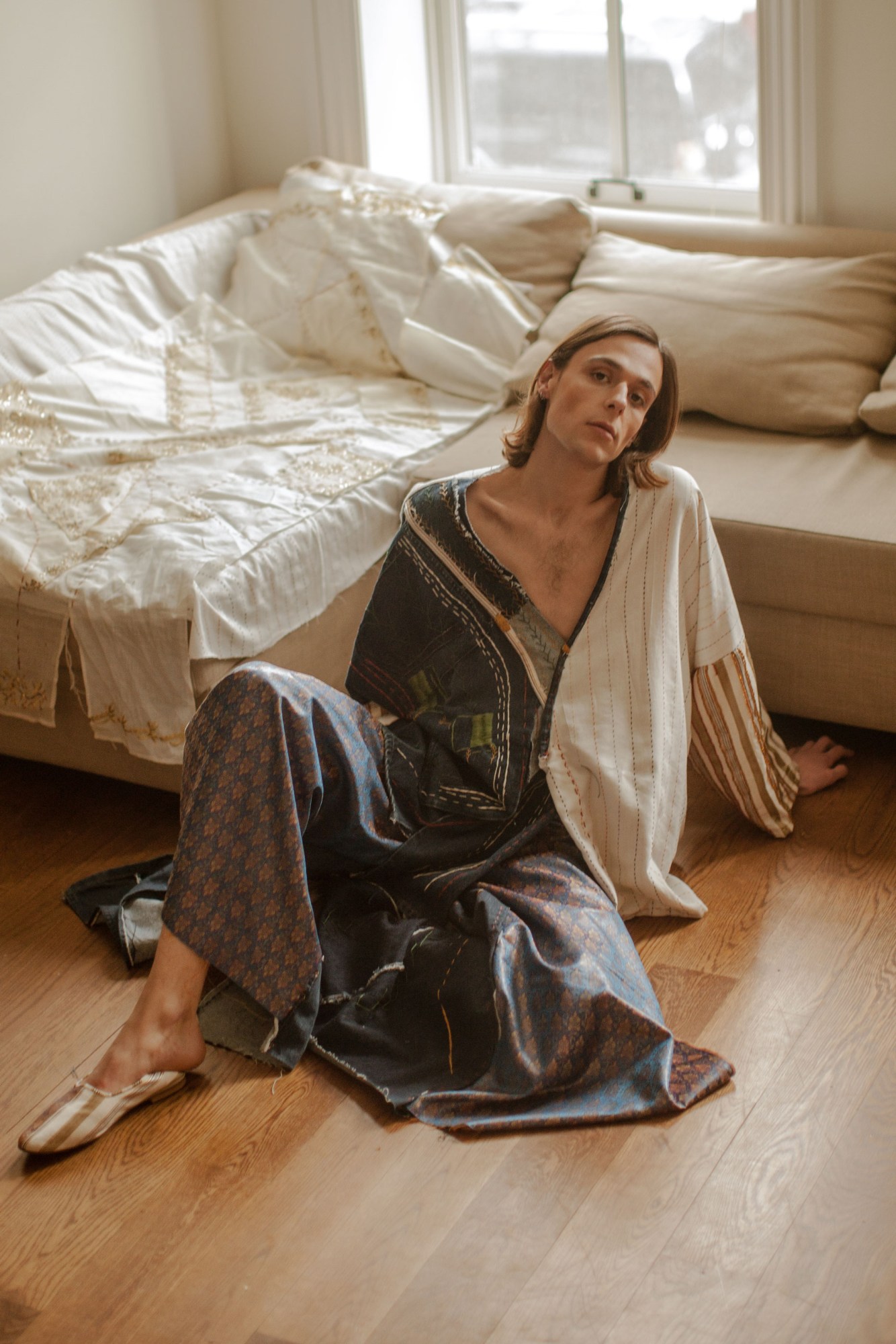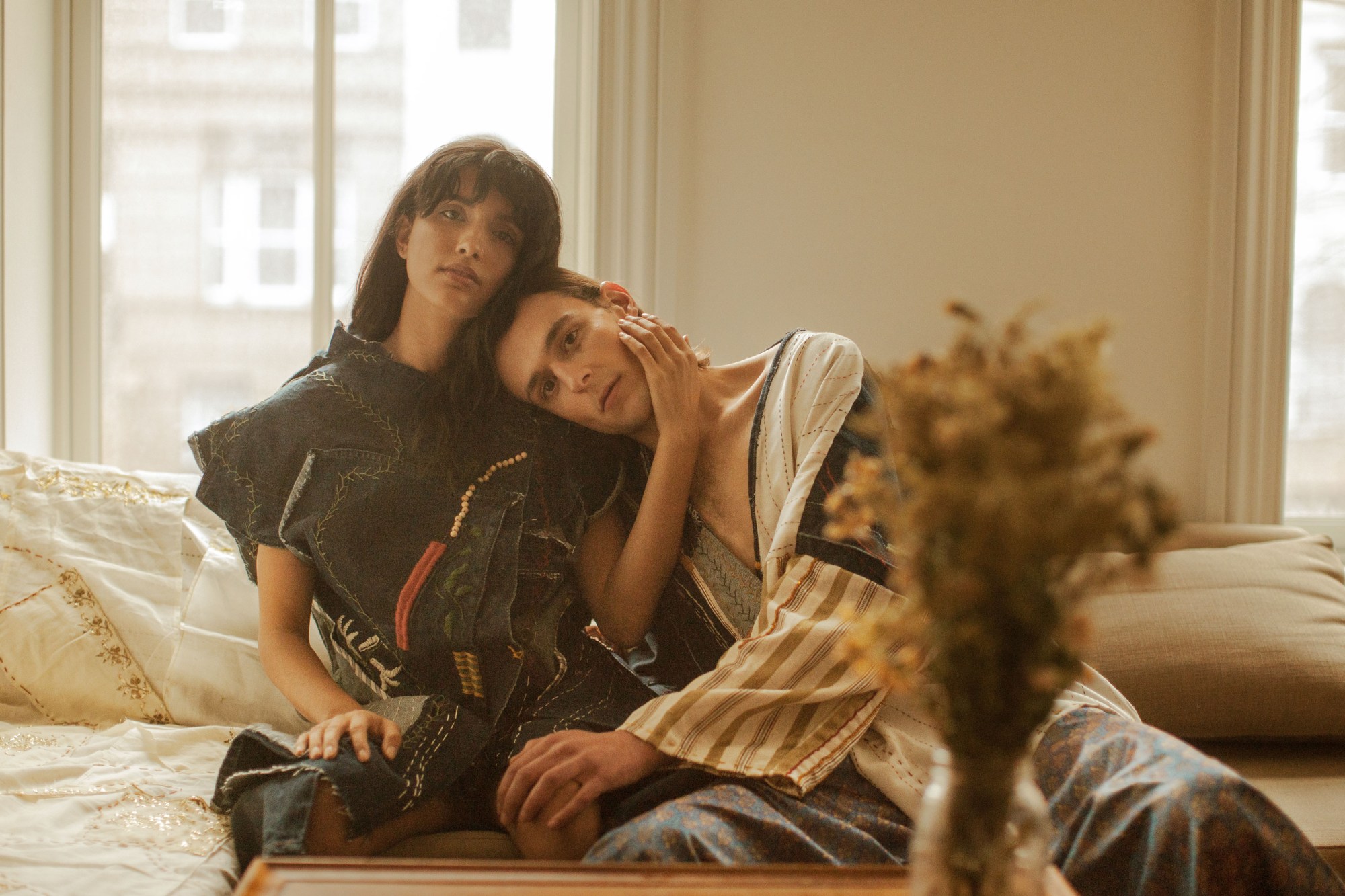It’s evident that craft is going through a resurgence at the moment — the likes of Loewe, Sacai and Kiko Kostadinov have put it firmly back on the agenda in recent seasons. But one designer who knows about the power of craft more than many is 21-year old Tala Barbotin Khalidy, who graduated from Parsons last month with a collection that puts embroidery at the forefront. Roomy, unisex shapes — all made from up-cycled scraps of denim — form the basis, with intricate embroidery, inspired by her Lebanese ancestry on her mother’s side, uniting the aesthetic.
For Tala, embroidery is far more than decoration — through personal experience, the 21 year old became aware that it could be a powerful form of therapy. This realisation led her to set up embroidery workshops with Womankind in New York — a residential shelter for victims of human trafficking, sexual violence and domestic violence, as well as late-in-life abuse. We caught up with Tala to find out more about the project, and the collection that grew from it.

First up, why is embroidery important to you?
My grandmother had a store that sold the work of craftspeople from Lebanon and the Middle East. There’s a lot of embroidery in these cultures, so I got into it from an early age.
In your thesis you mention that Middle Eastern embroidery has a strong connection with identity?
Yes, different villages have their own motifs that they embroider on their clothes, so you can tell who comes from where according to what they’re wearing. It’s like a tag, like ‘I’m from here’. There’s a lot of pride around that.
What made you realise embroidery had potential as a therapy method?
I lost my grandmother to cancer in 2016, and during that time I started experimenting with embroidery. I found it so therapeutic to engage in an activity that was so focused on the hands that the mind could roam free — it was almost meditative. That inspired me to push it forward and see how it could potentially help other people. As part of my collection research, I also found out that embroidery was used for therapeutic purposes with WWI soldiers, in hospitals.
How did the workshops come about?
I reached out and suggested the idea to Womankind, who paired me up with Diane Hwang, a current MFA student at Parsons. She ran a workshop beforehand that focused on relationships with the body, so we started by blending together the idea of embroidery as therapy and women’s relationships with their bodies after all this trauma.
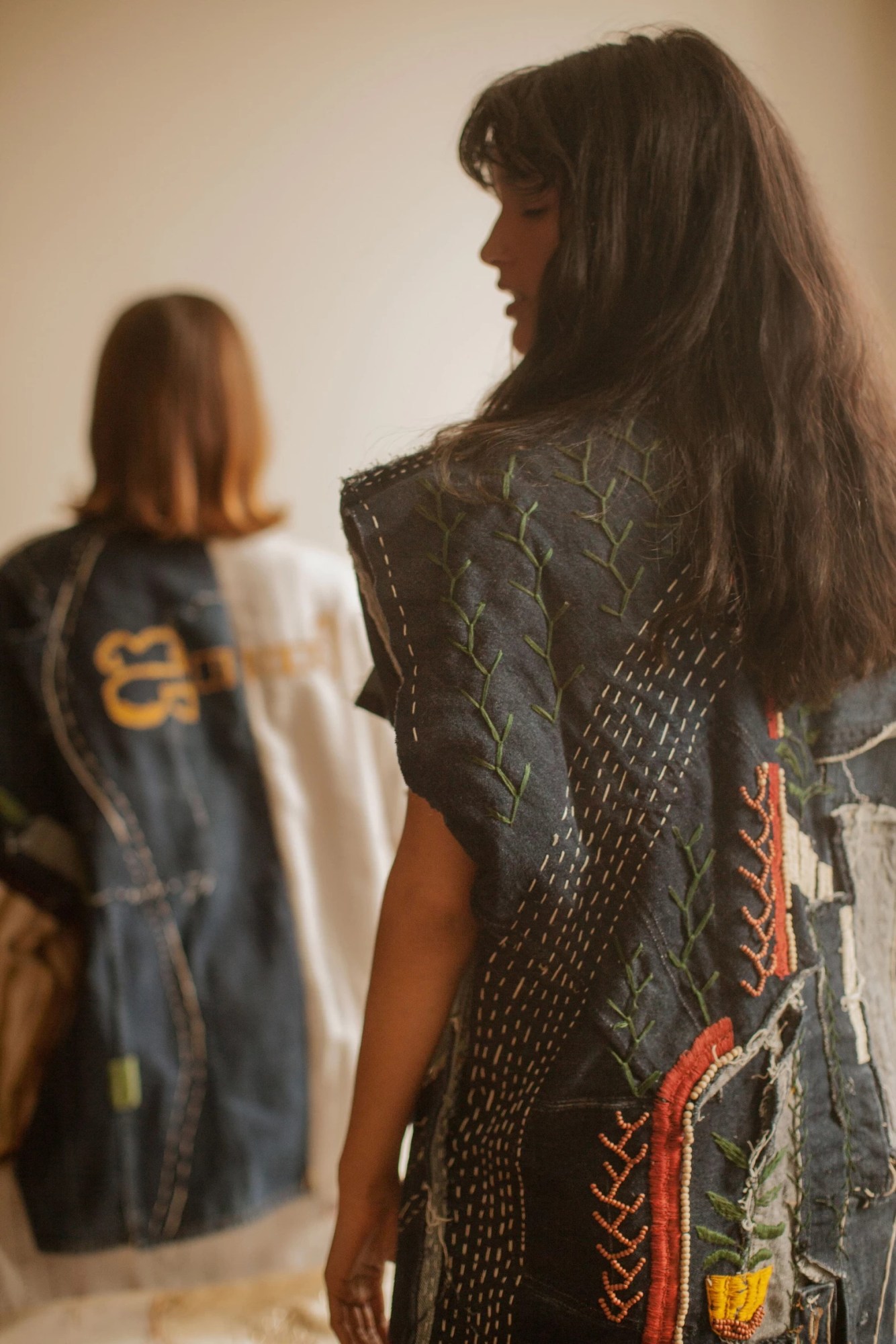
What kinds of women were you working with?
Such a wide range. From really young women in their early 20s, up to 70, 80 years old. It was women of all different social classes, ethnicities, cultures, with completely different language skills. A lot of mothers too, with their kids.
What took place in a typical session?
I based each one off what the women were telling me they wanted to do. In the beginning I taught very basic stitches. Later we moved on to patchwork, and using embroidery techniques to repair clothes. And we also had discussion and brainstorming about clothing.
Did you find deeper conversations began to happen?
I didn’t ask any invasive questions, but once the women felt more comfortable, they just started talking — about the way they came to this residence, their situation. Giving them that space helped them to express themselves in a way that maybe traditional therapy wouldn’t allow. We talked a lot about the future, actually. It was so hard at the beginning for them to think in terms of the future, even thinking about tomorrow was kind of tough. But thinking about a stitch you’re going to make for next week helped them to think about what they might go on to do in life. One of them said she wants to go into textiles.
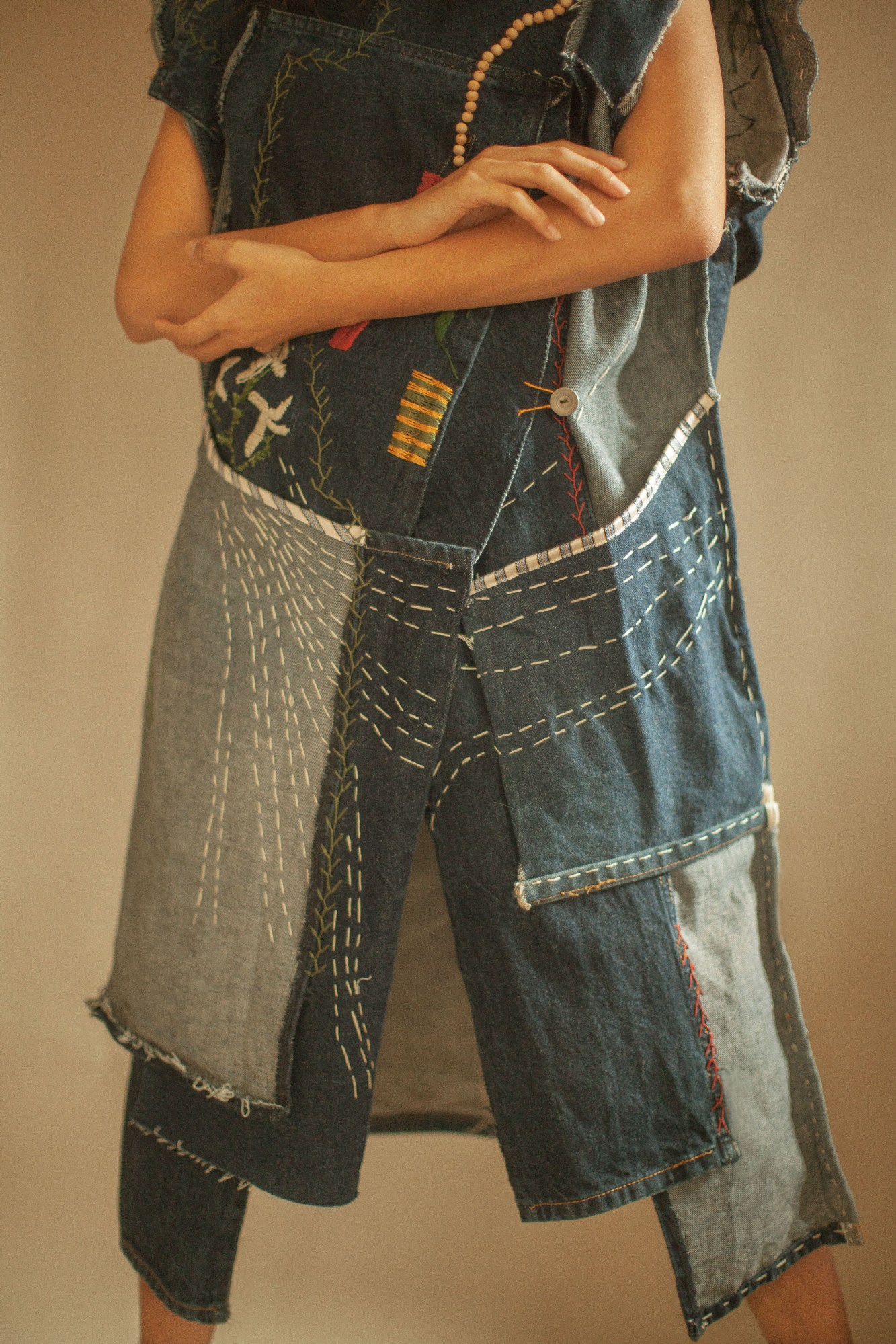
What it was like working on such a project in New York, given the erosion of women’s rights in America at the moment?
The rise in discrimination against women and immigrants in America was actually one of the reasons that I started the workshops. I think that building community, engaging in conversations with women and individuals from different cultures, and letting them establish their own sense of identity are crucial steps in resisting oppression and ignorance.
You started designing your collection once the workshops were over. How did the two processes interact?
We created motifs together in the workshops that ended up in my collection. And a lot of the discussion we had — about what the women wanted to wear, what they felt most comfortable in — influenced my shapes. Also, towards the end of the workshops a lot of women started wearing jeans. Previously they had only worn tunics or dresses, and I realised the jeans were a tool for personal expression, a symbol of independence. That’s why I chose to use upcycled denim. I wanted to take existing clothes and give them a new story.
Your collection is called Sira, can you explain the name?
‘Sira’ is an Arabic word that has different meanings. It means story, identity, biography, so many things. The collection is a little bit of my biography, looking at my origins and my culture, but it’s also the biography of what I’m doing with embroidery as therapy, trying to create a life path for the women I work with.
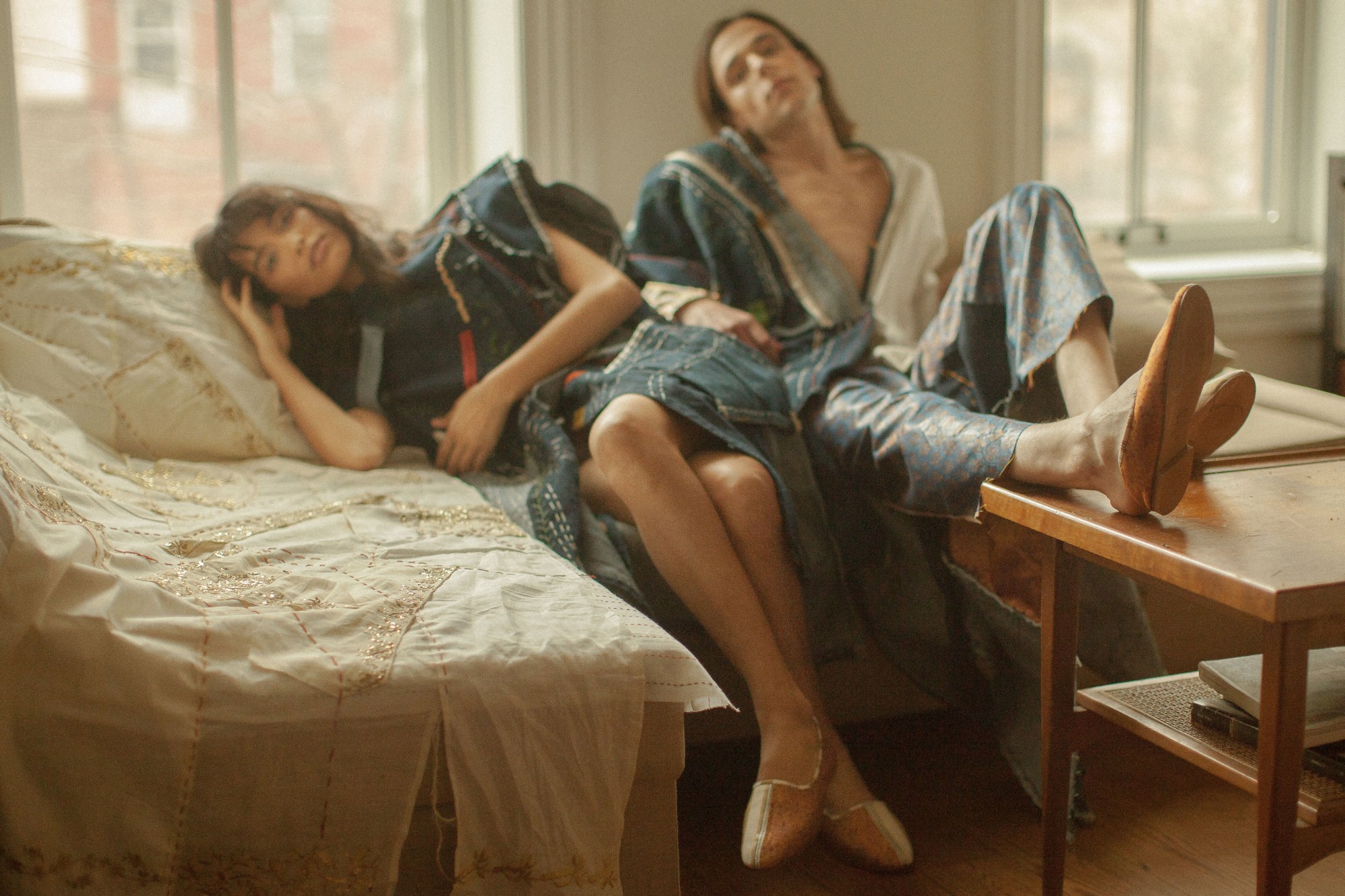
What designers inspire you?
I really like Tome, and there are some brilliant designers at fashion incubator Creative Space Beirut. And there’s Artisans du Liban et d’Orient, my grandmother’s label in Lebanon that my mother took over. They are collaborating with craftsmen in Lebanon and Syria to create beautiful traditional pieces. The techniques they employ are exceptional — and this is a completely unbiased opinion!
What do you think about fashion’s renewed interest in craft?
I’m just really hoping it’s going to be sustained. And I hope that brands are being respectful of certain traditional techniques or certain origins, as opposed to just sticking an image on a moodboard.
What have you been doing since you graduated?
Right now I’m working at the BF+DA (Brooklyn Fashion + Design Accelerator), on a project called TEK-TILES, looking at using technology and smart textiles for health and wellness applications. It’s a two month program, then I’m going to start the workshops again in September. I will probably launch my own label in the future.
